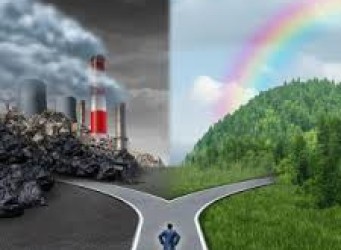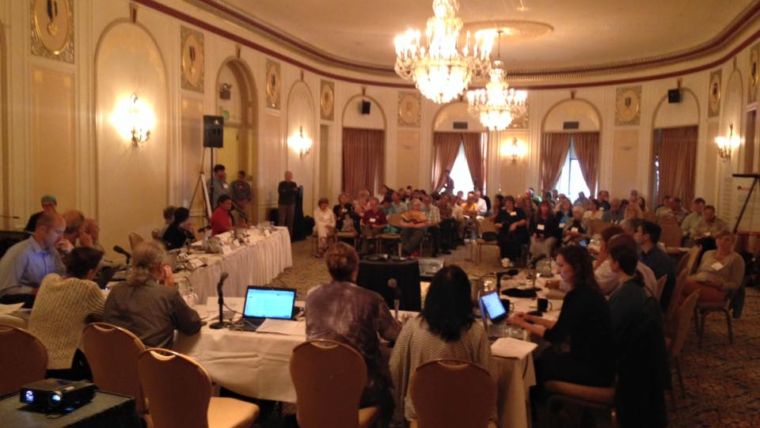Since I’ve been writing about how horrible the impact of Global Climate Change is likely to be, I thought I’d pass on a more optimistic view. Besides, some of you have been responding to me siting information showing that things aren’t as dire as I make them out to be. Let’s hope that I am over inflating our grim future. I know that hope is not a strategy but getting to work and transitioning to a carbon free future faster than conventional wisdom thinks is possible is doable and we need to make it happen. The following OpEd from the Washington Post on April 8th sites reports that indicate that we still have a chance to minimize the coming change if we act boldly and quickly.
There’s Still Hope On Global Warming — If the World Get’s to Work

A polar bear plays in the water just outside the Inupiat village of Kaktovik, Alaska, on Sept. 11, 2017. As climate change shrinks their natural habitat, polar bears are moving into Kaktovik. (Jim Lo Scalzo/EPA-EFE)
THE FIGHT against global warming is not hopeless. But the world must work harder. That is the upshot from a new report on the world’s energy use and emissions, which shows that modern economies can cut their addiction to carbon dioxide but that the pace must pick up.
The International Energy Agency (IEA) reported last month that global greenhouse emissions rose faster in 2017, after flattening out in the three previous years. Ramped-up economic growth in Asia is the main culprit. Despite China’s impressive investments in renewables and a more efficient Chinese economy, the nation also burned more coal to meet rapid growth in energy demand. Though it is installing new solar power capacity, India’s efforts to bring electricity to more of its citizens have nevertheless put upward pressure on its emissions. Emissions even ticked up in the European Union, which had aggressively slimmed its carbon footprint in previous years.
Perhaps surprisingly, the United States, which pulled out of the Paris climate accord last year, was a bright spot. U.S. emissions were down slightly last year, the third year in a row. Previous declines were driven by power companies switching from coal to less dirty natural gas. But the deployment of renewables accounted for much of last year’s drop. Renewables met about 17 percent of the nation’s electricity needs, while carbon-free nuclear power contributed about 20 percent. With the Trump administration abdicating its role in driving the needed energy transformation, it is crucial that states and Congress support further progress. The United States, in other words, has restrained its emissions even as economic growth has ticked up. In large developing countries, emissions increases have not been as large as they would have been just a couple years ago for the same amount of economic growth. China’s commitment to renewables and, more recently, electric cars promises to improve this picture further, and the country still burns less coal than it did in 2013. Renewables now provide a quarter of the world’s electricity.
But the world does not have the time to wait for gradual change. To avoid the risk of very negative climate shifts, “global emissions need to peak soon and decline steeply to 2020,” the report warns . “The share of low-carbon energy sources must increase by 1.1 percentage points every year, more than five-times the growth registered in 2017,” the IEA concluded.
Every country in the world, the United States included, must put in more effort. Even if stringent global emissions goals seem too difficult to reach, it is still worth cutting the risk of truly catastrophic warming as much as possible. The most plausible vehicle for encouraging global effort, so the United States does not shrink its carbon footprint while others dawdle, is the Paris agreement that President Trump repudiated. Unless the president changes his mind and the United States rejoins the pact, the country will squander the moral currency it earns when reports like this come out.



